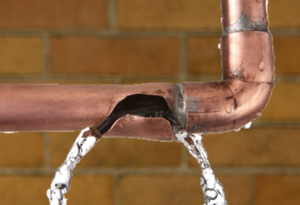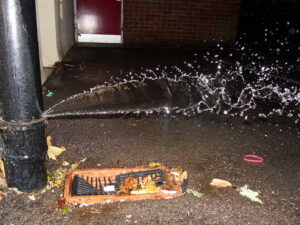Quick-Response Plumbing: Tips for Identifying and Dealing With Burst Pipes
Quick-Response Plumbing: Tips for Identifying and Dealing With Burst Pipes
Blog Article
What are your thoughts with regards to How to Install and Connect a New Dishwasher?

A burst pipe is a significant emergency; you can just stand as you view water you pay a lot to rejoin with the earth. In worse instances, you discover a pool on your cooking area floor, which is a terrific journey hazard, especially if you have kids around. If the pipeline that burst was in your wall surfaces, trouble: you may need to paint that whole section.
Exactly how can a catastrophe like a ruptured pipe be stopped and also managed? Well, by listening to your expert emergency plumbers and following these policies.
Exactly how do I recognize when my pipelines have ruptured?
Fluctuating water pressures
Pipes do not just burst in a day. You might have seen that your cooking area faucet or shower does not run immediately when you turn the faucet. It might stop briefly for a couple of secs and after that blast you with even more pressure than common.
In other instances, the water may seem typical initially, after that decrease in stress after a couple of secs.
Damp wall surfaces and water stains
Before a pipe bursts, it will leakage, the majority of times. If this relentless leaking goes unnoticed, the leak may graduate into a wide gouge in your pipe. One easy method to avoid this emergency is to watch out for wet walls ad water stains. These water stains will lead you right to the leak.
Puddles under pipes and sinks
When a pipe ruptureds, the discharge creates a pool. It might show up that the pool is growing in size, and no matter how many times you mop the puddle, in a couple of mins, there's an additional one waiting to be cleaned up. Commonly, you might not have the ability to map the pool to any type of noticeable pipes. This is a sign to call a professional plumber.
Untraceable trickling sounds
Pipeline bursts can happen in one of the most undesirable areas, like within concrete, inside wall surfaces, or under sinks. When your home goes silent, you might be able to hear an aggravatingly relentless leaking noise. Even after you have actually examined your shower head as well as kitchen tap, the trickling might continue.
Dear viewers, the leaking may be coming from a pipeline inside your wall surfaces. There isn't much you can do about that, other than inform a professional plumber.
Shut off the Water
When water ices up, it broadens in volume by about 9 percent. And it expands with remarkable pressure: The stress inside pipes might go from 40 extra pounds per square inch to 40,000 psi! No pipe can hold that much stress, so it bursts. The break may take place where the ice types, but regularly, it happens where water pressure locates a vulnerable point in the pipeline. That might be inches or even feet from the icy location. Find the water shutoff valve and also turn off the water to stop even more damage. You could likewise need to shut down the electrical power too, depending upon where the leaks happens and just how huge it is.
Infected water
Lots of people think a burst pipeline is a one-way electrical outlet. Quite the contrary. As water drains of the hole or gouge in your plumbing system, impurities discover their method.
Your water may be polluted from the source, so if you can, inspect if your water tank has any type of problems. Nevertheless, if your alcohol consumption water is supplied as well as purified by the local government, you ought to call your plumber quickly if you see or smell anything amusing in your water.
What do I do when I spot a burst pipe?
Your water meter will remain to run even while your water wastes. To reduce your losses, find the main controls and turn the supply off. The water pipe are an above-ground framework at the edge of your building.
How to Fix & Detect a Leaking Pipe
How Do I Know if a Pipe is Leaking?
Leak detection tests can help you determine if your pipe has a leak. Even if you don’t see an apparent leak, you should still conduct leak detection tests regularly to save water and money—and prevent major damage to your home.
Water meter. It can be helpful to figure out what your usual water meter usage numbers are and then monitor them regularly. To monitor your meter, first, turn off all water faucets in your home. Check the meter and write down the numbers. In a few hours, check the meter again. If the numbers have changed, you have a leak. Water gauge. Use a water gauge to test your water pressure. Your showerhead should produce a certain amount of water pressure based on its model and design. If the pressure is lower than it is supposed to be for that specific showerhead, your home likely has a leak. Puddles. Look inside your bathroom, laundry, and kitchen sink cabinets. Puddles around the cabinets or around toilets, tubs, showers, and washing machines indicate the presence of a leaking pipe. You may also notice loose tiles, peeling or flaking paint, or mold caused by water accumulation. Napkin test. Even if you don’t see any puddles, you may still have a leak. You can test for water leaks in the bathroom, laundry, and kitchen by wiping below-sink connections with a napkin, paper towel, or piece of toilet paper. If it becomes damp, you probably have a leaking pipe under the sink. Discolored walls. Walls that are discolored—usually with brown or yellow stains—or bulging might mean that they have been impacted by water damage caused by a leaking pipe. Smell. A leaky pipe will create sitting water, and over time, that water may develop a musty smell. If your home smells musty, but you can’t locate the source, it may be due to a leak. Steps for Fixing a Leaking Pipe
A leaky drain can be remedied by tightening the pipe base, replacing the drain seal, caulking the rim, and tightening the pipe nut. Similarly, a leaking toilet pipe can be treated by tightening the packing nut. You may also need to replace the valve. A leaky faucet may just need tightening or replacement of the washers. If that doesn’t work, consider replacing your faucet. If your pipe has a hole in it, you may want to use a pipe leak sealer or pipe leak tape. This quick fix for water pipe leaks can also temporarily fix a copper pipe leak. https://www.ahs.com/home-matters/quick-tips/how-to-tell-if-pipes-are-leaking/

I discovered that piece of writing about How to Install and Connect a New Dishwasher while doing a lookup on the web. Sharing is good. Helping people is fun. Kudos for your time. Come back soon.
View Website
Report this page